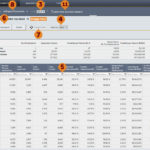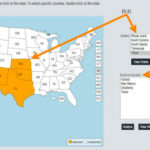1. What is HMDA?
HMDA, which stands for the Home Mortgage Disclosure Act, was enacted by Congress and requires most lending institutions (i.e., credit unions, banks, savings associations, and other mortgage lending institutions) to report public loan data. The intended purpose of reporting public loan data is to:
- Help the Consumer Financial Protection Bureau (CFPB) determine whether financial institutions are serving the housing needs of their communities
- Assist public officials in distributing public-sector investments so as to draw private investment to areas where it is most needed
- Assist in the identification of possible discriminatory lending patterns
2. I cannot find my credit union’s data in MortgageAnalyzer – why is that?
According to HMDA regulations as of January 1, 2017, credit unions that meet the following criteria do not have to report HMDA data:
- Credit unions under $44.0 million in assets at year-end.
- Credit unions lending outside of metropolitan statistical areas (MSAs).
Even if your credit union’s data is not available in MortgageAnalyzer it can still be a valuable tool if your institution anticipates future growth. In anticipation of growth, MortgageAnalyzer can help you wisely position yourself in the mortgage market.
3. If HMDA data is publicly available, why should I use MortgageAnalyzer?
Think of “Google Translate”. Everything that is accessible via Google is available in multiple languages – but unless it is in a language you know and understand, the information is useless. Did you know there are roughly 19 million cells of data in the full HMDA file? MortgageAnalyzer saves you time and resources by crunching the numbers for you. It also allows you to do more than just access the data but actually understand it to make actionable decisions. Further, because of the easy-to-use filters built into MortgageAnalyzer, versatile analysis is effortless & relevant to a multitude of decisions makers in your credit union.
4. Why is the most recent data only from 2015?
The Federal Financial Institutions Examination Council (FFIEC) releases the HMDA data on an annual basis each September meaning there is a 9-month lag time between data submission & its release. By mid-September 2017, the FFIEC will release the 2016 HMDA data (and it will subsequently be added MortgageAnalyzer).
5. What is a MSA?
MSA stands for Metropolitan Statistical Area. A MSA is a geographical region with a relatively high population density and is typically centered on a single large city that has influence over the region (example: Atlanta) but in some cases there is more than one city holding equal dominance (example: Minneapolis-Saint Paul). MSAs are used by the census bureau and other government agencies for statistical purposes.
6. Who uses MortgageAnalyzer?
MortgageAnalyzer can be used by many roles within a credit union or organization. Outside of the obvious (the lending department), finance, operations, marketing, sales and service, and the CEO can all find value from MortgageAnalyzer.
7. How can I use MortgageAnalyzer to improve my mortgage lending?
Learn who the leaders are in your market place – then do competitive research on their product offerings to learn how to differentiate yours. MortgageAnalyzer can tell you:
- the number of institutions in a market
- the application volume
- the market share of various institutions (by both % of applications & $ amount of loans).
Uncover unknown lenders in your market to help position your products more effectively. Many credit unions are well aware of the credit union and community bank around the corner but what about national and online lenders? How do they stack up in your market?
Look for new market opportunities by evaluating adjacent markets for untapped opportunity.
[zilla_button url=”/support/wp-content/uploads/2016/12/MortgageAnalyzer-FAQ-2017.pdf” style=”blue” size=”medium” type=”square” target=”_blank”] Download/View PDF Here [/zilla_button]




